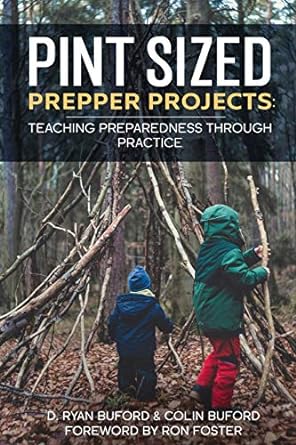[ARTICLE]: Avoiding Heat-Stroke or Heat-Related Emergencies
This Summer there has been record temperatures preceded by storms that fell trees and created power outages. Large numbers of people are without power to cool their homes and heat-related emergencies or heat-stroke could be deadly factor to deal with in high temperatures. Here is some information on detecting, responding to, and preventing a heat-related emergency. Also be mindful of the vulnerable ones in your community; the very young, and the very old.
Heat-related emergencies can occur as a result of fluid and electrolytes (salts) loss from heavy sweating. Loss of fluid and electrolytes can begin to produce painful spasms of skeletal muscles, usually in the lags and the abdomen. Body temperature is usually normal, and the skin is moist. Over time, the victim loses fluid through sweating, which decreases the blood volume. Blood flow to the skin increases, reducing blood flow to the vital organs. Because the circulatory system is affected; the person goes into mild shock. At this point, the victim's body temperature will usually be normal or below normal.
Other symptoms of heat stroke:
- Cool, moist, pale or ashen skin
- Headache
- Nausea
- Dizziness and weakness
- Exhaustion In this stage, heat-related illness can usually be reversed with prompt care. Often the victim feels better when he or she rests in a cool place and drinks cool water. Electrolytes can be replenished with this easy replenisher, a kind of substitute for Gatorade:
Electrolyte Replenisher- 2 C. Water
- 2 Tbs Orange, lemon, and/or lime juice
- 2 Tbs Honey
- Pinch of salt (approx 1/8t)
When signs of symptoms of sudden illness develop and you suspect the illness is caused by overexposure to heat, follow these general care steps immediately:- Check the ABCs (Airway - Breathing - Circulation)
- Call 911 - Summon more advanced medical personnel
- Remove the victim from the hot environment
- Have the victim lie down in a cool or shady area, Elevate the legs slightly, if possible.
- Loosen or remove clothing
- Apply cool, wet towels or sheets or cold packs to the body
- Fan the victim to help increase evaporation
- If you only have ice or cold packs, place them on the victim's wrists and ankles, in each armpit, and in the groin to cool the large blood vessels
- Give small amounts of water to a fully conscious victim
- Do not apply Rubbing (isopropyl) alcohol
- The alcohol may cause poisoning., either through the skin or through inhalation
- Monitor vital signs
A person suffering from the later stage of heat-related illness my experience respiratory or cardiac arrest. Be prepared to do rescue breathing or CPR
Preventing Heat-Related Emergencies
Generally, emergencies caused by overexposure to extreme temperatures are preventable. To prevent heat-related emergencies from happening to you or anyone you know, follow these guidelines
Do not work in the hottest parts of the day if possible Take frequent breaks to cool the body Take breaks to replenish the body with food and fluids Reduce the intensity of the work Wear appropriate clothing for the task and the environment
Drinking cool fluids helps the body maintain a normal temperature. Do not drink beverages containing caffeine or alcohol. These chemicals hinder the body's temperature-regulating mechanism.
Always wear appropriate clothing for the environment and your activity level. Cotton clothing absorbs perspiration and lets air circulate through the material. This lets heat escape and perspiration evaporate, cooling the body.
Wear a hat. A hat protects the head from the sun's rays in the summer.
A note on the color of clothing
There is some debate on what colors, light or dark are better for the heat. Below are some quotes citing the differences and the mechanics of light vs. dark clothing in the heat. Note the mentioning of the desert-dwelling Bedouin peoples who are known to cover themselves with loose dark clothing:
"...black clothing absorbs sunlight and the heat radiating from your body, but if it is loose-fitting, and there is wind, the wind convects the heat away faster than it is absorbed. White clothing reflects sunlight, but also reflects internal heat back towards your body, so the net effect under identical conditions is less cooling than if you wore black..."
[3]
"..The choice of clothing is also crucial. Darker clothes absorb more heat than lighter colors. Also, pay attention to the fabric. On extremely hot humid days, you want fabric that will whisk moisture away from the body and allow for maximum convection. Consider clothing that expose more of the arms such a tank top or singlet. Consider wearing more, not less coverage on extremely hot dry days This is because the rate of evaporation exceeds the body's ability to produce water. It is counter intuitive, but examine how the Desert Bedouin dress[7] . They cover most of their body. The fabric they wear allows for the water to remain on the skin for longer periods of time. In extremely hot and dry conditions wearing a legionnaire hat can be beneficial. This hat has a flap/neck drape that one can constantly dump cool water over to help maintain a lower body temperature..."[4]
"...Thermos bottles have shiny coatings inside that reflect the heat back and therefore help prevent heat loss. Radiation is the reason why you feel very hot if you wear black clothing on a hot sunny day, and are cooler if you wear clothes lighter in color. Some Bedouin tribes[7] and people who dress in a similar fashion are an exception to the black clothing rule. They favor loosely fitting, porous black robes because radiation actually helps set up convection currents. These currents form breezes that continually waft through the material..."[5]
"..As a photographer, I visited Bedouin[7] territory many years ago and I was astonished to see everyone dressed in black or very dark blue (indigo), loose-fitting layers of clothing. When I asked my host why they didn't wear lighter-colored clothing, he looked at me like I was crazy (that happened a lot during my time there!) and told me they didn't feel like dying of heat exhaustion. I tried it, and was amazed at the difference. Yes, you're still hot (after all, it got upward of 120 degrees some days), but you definitely feel cooler wearing dark clothing. I asked him about all the people I saw in the cities wearing white robes, etc. and he said it was a status symbol - a sign that those people: a) are not "of the desert" anymore (an important social distinction in some countries), and b) could afford air conditioning, hence the white clothing..."[6]
So essentially, if it is humid less light colored clothing, and if it is hot dry and windy, loose fitting darker clothing serves a good protection.
Sources:
The American National Red Cross (1997) Emergency Response. St.Louis, MO: Mosby Lifeline/Mosby - Year Book
The Red Cross >> http://www.RedCross.org/
Why do Bedouins Wear Black Robes? >> http://www.physicsforums.com/archive/index.php/t-65287.html
How to Run a Marathon >> http://howtorunamarathon.net/Maintaining_Body_Temperatur.html
What is Thermal Radiation? >> http://www.brighthub.com/engineering/mechanical/articles/47635.aspx
Wear Black Clothes in the Summer? >> http://tywkiwdbi.blogspot.com/2012/04/wear-black-clothes-in-summer.html
Bedouin Dress >> http://www.raqs.co.nz/me/clothing_bedouin.html







